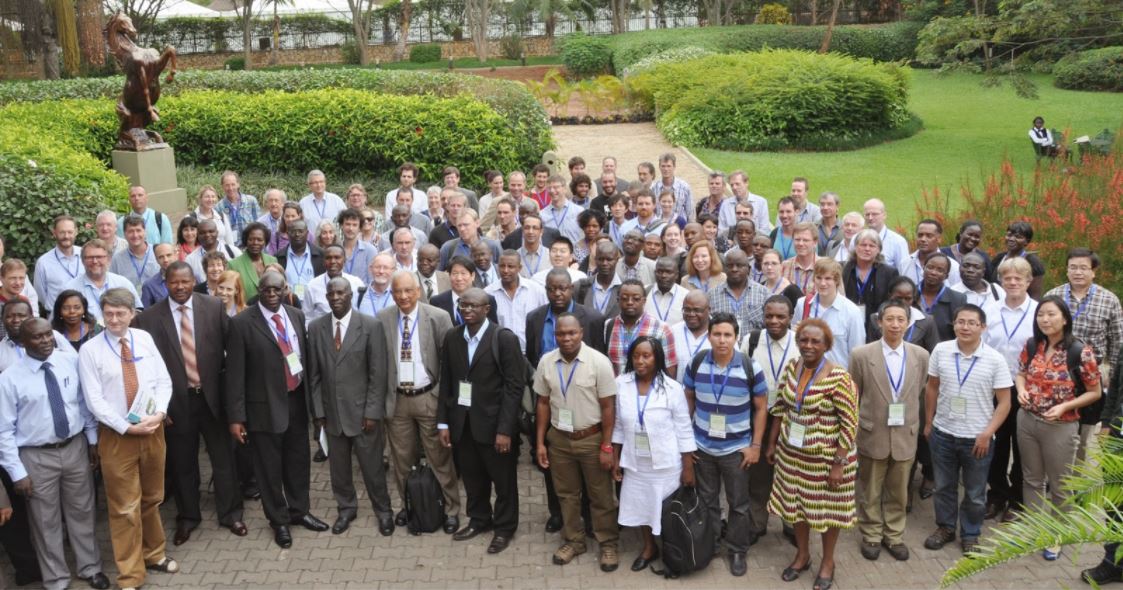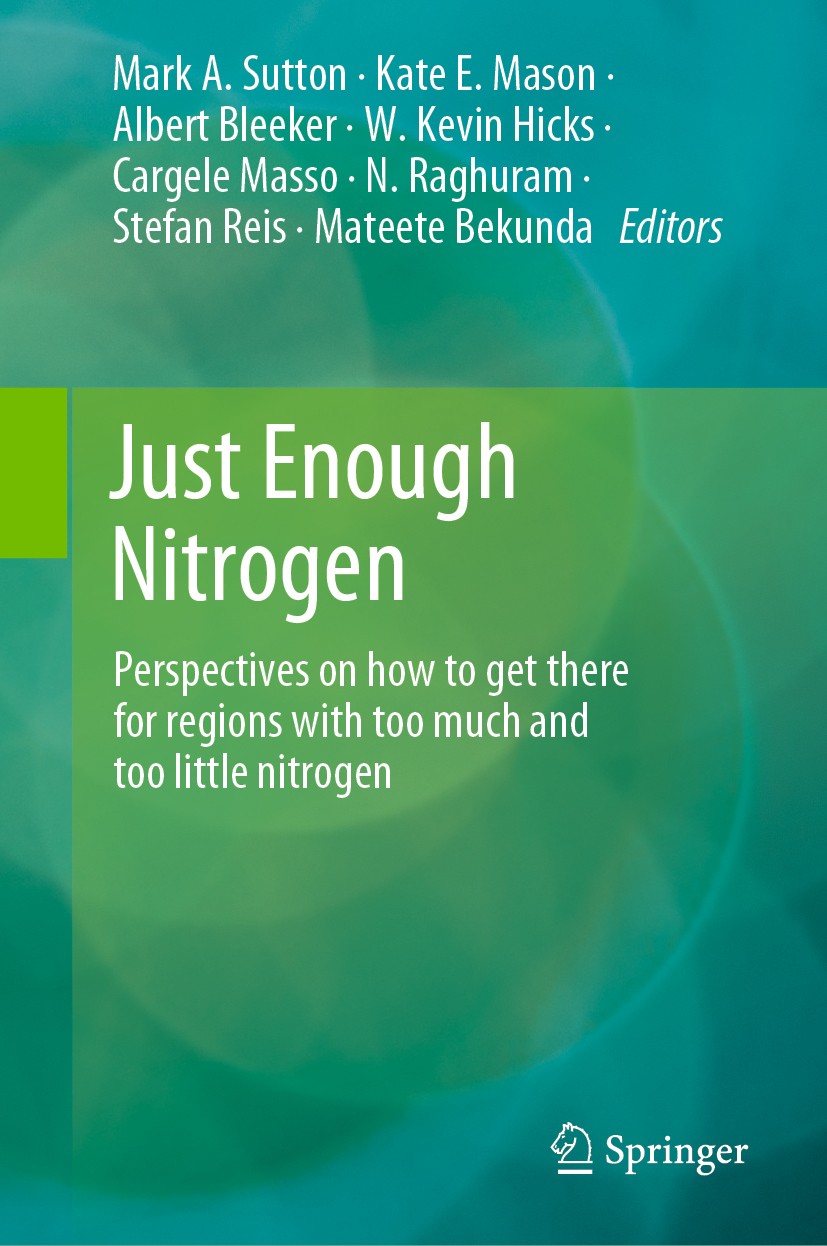
So how much nitrogen do we really need? And in what forms do we need it? These questions were at the heart of the Sixth International Nitrogen Conference held in Kampala, Uganda. The event was the first time the International Nitrogen Initiative (INI) had held is triennial meeting in Africa, and questions about nitrogen insecurity were just as much to the fore as discussion about nitrogen excess and pollution.
Finding durable solutions is not always easy and needs persistence, and this was exactly our experience of holding the Kampala conference. During the event itself we were kindly hosted by Makerere University, Kampala, with an excellent conference venue to top international standards. It was a super forum for discussion and reflection, allowing scientists to share ideas and push debates forward to the next stage. For example, the conference included a high-octane event hosted by the Global Partnership on Nutrient Management (GPNM) with the support of the United Nations Environment Programme (UNEP). This allowed stakeholders and experts to discuss whether more fertilizers were the answer to meet African food needs or whether the answer for sustainability lay in agro-ecological approaches, favouring biological nitrogen fixation.
It is a debate that is likely to become even more prominent since the launch of UNEP’s Global Campaign on Sustainable Nitrogen Management. The United Nations campaign emphasizes the opportunity to “halve nitrogen waste” globally by 2030, aiming to save 100 billion USD annually. In this regard the Kampala discussion was prescient in already making clear that – whatever your paradigm – we need to use of all available nitrogen resources, wasting less as a foundation to support food and energy production, while reducing climate impacts, air and water pollution.
This need for persistence was matched by our experience after the conference, which actually took place in November 2013. It seems scary to realise that it has taken us seven years to complete all the products from the N2013 conference! First off, we were happy to produce a fast-track special issue of peer review articles in Environmental Research Letters. At the same time, it became clear that more time was needed to grow the harvest in the form of a book – bringing together the wide range of outcomes. It ultimately led to the volume launched this week “Just Enough Nitrogen”, where specially commissioned chapters on regional nitrogen assessments have been brought together with the main conference findings, with further analyses building on the work started during the Kampala conference.
If the product has taken longer than we originally hoped, it has also taught us lessons in sticking with it and not giving up. In fact, the marathon became all the more challenging because of the success of Kampala in spinning up new initiatives, such as the International Nitrogen Management System (INMS).
One of the easiest chapters to finalize focused on “The Kampala Statement-for-Action on Reactive Nitrogen in Africa and Globally”. It was straightforward because the core text was already negotiated in Kampala, to which necessary background information was added, describing other key international nitrogen agreements. Much more work was needed in bringing together the wider regional and global view, with reports on progress for all INI regional centres and a global perspective on nitrogen policy homes. Personally, I am extremely happy to see a major group of chapters led by African authors, with this integrated into the global perspective where every inhabited continent is represented. It has been a truly global harvest, with Africa at the heart.
Of all the chapters in the new book, it is the one led by Trust Tumwesigye and Giregon Olupot, from Makerere University, that excites me most. The title comes across as extremely technical: “Pre-informed consumers on a pre-adjusted menu had smaller nitrogen footprints during the N2013 conference, Kampala, than those on a conventional menu”. Behind this technical perspective, however, lie both important data and a radical message.

The data are actually quite simple: on behalf of N2013, the team worked in advance with the hosting resort, broadly aiming for a demitarian approach: reducing target meat and dairy consumption by 50% compared with normal local practice. I personally met with the hotel chef, who was extremely enthusiastic about our interest and care for food and environment. The hotel resort did all they could to support us – providing detailed datasets to allow the calculations to be made and the N2013 menu to be modified. As far as can be seen, the delegates were fully satisfied, leading to both a much smaller nitrogen footprint and more food waste than the normal reference conference. If the second result seems unexpected, the conclusion was that our pre-informed delegates chose for themselves to eat less than the reference conference, meaning that we could have reduced the meat serving even more.
Yet this chapter is important for another reason. It means that it is possible to have impossible conversations and take impossible actions. It shows how we were able to grasp the nettle and make changes we never expected to be possible. A few years earlier in following up the Barsac Declaration on Environmental Sustainability and the Demitarian Diet, we had started reducing meat intake in European nitrogen-science conferences. This was easy to justify for a continent where – as most now agree – the citizens are eating more meat and dairy than needed for a healthy or sustainable diet. But had you told me a decade ago that it would be possible to reduce meat and dairy intake in Africa, then I would have said that this was impossible. Surely, many Africans need better diets with more food, not less.
The lesson from Kampala was that society is not just about averages. Of course many in Africa need better diets. But at the same time, there is huge social inequality, while food is an important part of African celebration culture. It means that among the richest (among which should include conference delegates), African society will often have an even higher meat and dairy intake than in Europe. In this way, the baseline meat intake in the Kampala conference was actually 50% higher than in our earlier Edinburgh conference. One problem with this inequality is that citizens aspire to what the richest are doing. It means that a future ambition among the richest for ‘nitrogen friendly’ diets has the opportunity to cascade and multiply through society with huge environmental and health benefits. It is an opportunity to help minimize future ‘overshoot’ in rapidly developing economies.
For the rest of the story, you will have to read the new book. For myself, the messages from Kampala will stay with me as we continue to work with the UN, applying our science to underpin the global campaign on Sustainable Nitrogen Management.
Mark Sutton
Director, International Nitrogen Management System.
Just Enough Nitrogen: Perspectives on how to get there for regions with too much and too little nitrogen. Springer (published November 2020). https://www.springer.com/gp/book/9783030580643.

